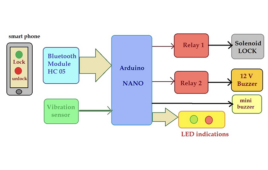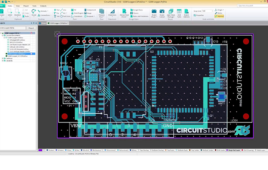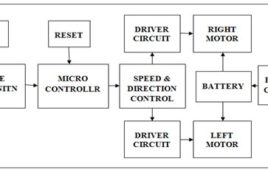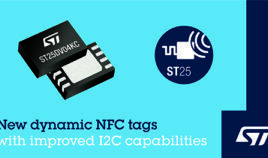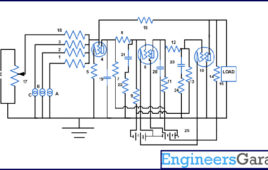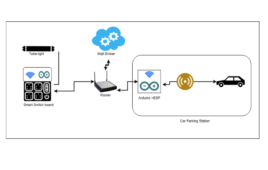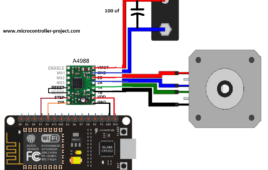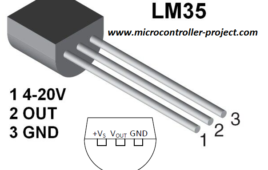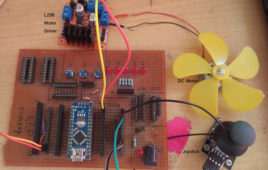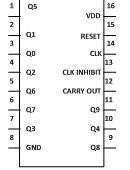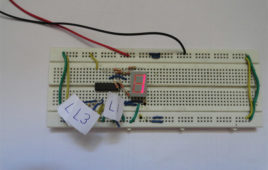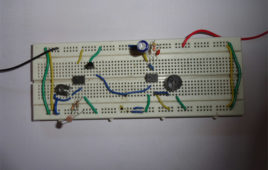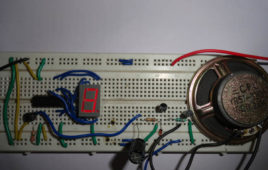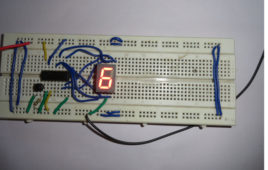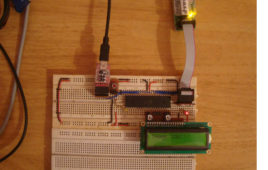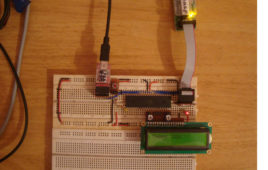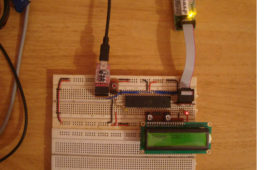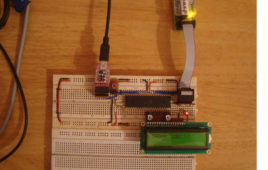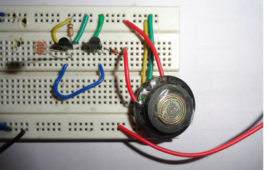In this project, we’ll design a unique door lock that can be operated without a keycard, input password, or biometric ID. A smartphone is the key to locking and unlocking the door via Bluetooth. This door uses a solenoid lock, which relies on a latch for electrical locking and unlocking. It also has LEDs to…
The top EDA tools for circuit and PCB design in 2023
Electronics manufacturing is possible thanks to electronic design automation (EDA) software. EDA has computerized and automated several processes in product design and production. While some tools focus on circuit design and simulation, others target design analysis, verification, and manufacturing preparations. Each tool provides a unique package optimized for electrical and electronics engineers. Although no tool…
Voice-controlled wheelchair for physically disabled people
The project aims at controlling a wheelchair by means of human voice. It enables a disabled person to move around independently, using a voice recognition application which is interfaced with motors.The prototype of the wheelchair is built using a micro-controller, chosen for its low cost, in addition to its versatility and performance in mathematical operations and communication with other electronic devices. The system has been designed and implemented in a cost effective way so that if our project is commercialized the needy users in developing countries will benefit from it.
STMicroelectronics enhances its dual-interface NFC tags
STMicroelectronics has increased the I2C-interface performance in the latest generation of its ST25DV-I2C dynamic NFC-tag ICs, which let the host system access the tag’s on-chip EEPROM more quickly and easily. Writing to the EEPROM on the new ST25DV-I2C tags, via the I2C interface, is now as fast as standard EEPROM and allows flexible use of the…
Op-amp Tutorial 1 : Basics, amplifier structure, testing 741 IC
An amplifier is a circuit which can produce an output voltage, which is the product of input voltage with a value called voltage gain. An op-amp (operational amplifier) is a kind of amplifier circuit which can perform an operation (addition, subtraction etc.) on the input voltages, apart from simply amplifying the input. It is an electronic…
How to use IoT-based D2D automation
In this tutorial, we’ll learn how to use device-to-device (D2D) communication to make daily life a little simpler. For example, you’ll be able to control household appliances, such as the coffee machine, a light switch, or the AC — and do so from inside your vehicle. So, if you’re arriving home one evening, the presence…
Nodemcu esp8266 stepper motor NEMA 17 controlled over WiFi
This tutorial is about controlling stepper motor over WiFi through desktop or mobile web browser using nodemcu esp8266 WiFi module. Nodemcu will work as a server and it will serve a web page. Web page contains the stepper motor control buttons. Stepper motor takes steps to complete one full 360 degree rotation. Number of steps…
LM35 Temperature Sensor Pin out, Interfacing guide, Circuit Construction and Working Principals
LM35 is a temperature sensor that outputs an analog signal which is proportional to the instantaneous temperature. The output voltage can easily be interpreted to obtain a temperature reading in Celsius. The advantage of lm35 over thermistor is it does not require any external calibration. The coating also protects it from self-heating. Low cost (approximately…
How to control DC motor speed & direction using a joystick and Arduino
Much like the name suggests, DC motor controllers control the speed and direction of a DC motor. To change the direction of the motor, however, the supply it receives must be reversed. And, to vary the DC motor speed, a pulse-width modulation (PWM) signal or wave must be applied to it. As the pulse width…
Two Way Traffic Light
The project described below is a small model of traffic light which we daily see in our life on street. With this circuit you can control two way traffics. There will be lights on both sides, like there is red light on one side and green light will be present aautomatically on another side. It will also have yellow light to alert the passengers or drivers that now there signal are going to open.CD4017 is a 16 pin CMOS decade counter/ Divider. It take clock signal from the clock input and turn on the 10 output in sequence, each time when it receives clock input pulses.4072 is a dual 4 input OR gate. Output of OR gate goes high when any of the input goes high and if all input is low then output is also low7432 is a quad 2 input OR gate. In this also output goes high when any of the input is high and goes low when all inputs are low. 7432 contains 4 individual OR gate on single IC.
Battery Level Indicator
Battery level indicator will let you know the status of battery of a device just by glowing the number of LED’s. For example four LED’s are glowing means battery capacity is 40 percent. You can use this circuit with your inverter or with your car battery; it will give you indication about your battery status. So before your battery dies you can recharge it.Advantage of this circuit is it does not require power supply; it will take power supply from the battery of the device itself. This simple circuit is based on single IC LM3914 with few more discrete components. LM3914 is a monolithic integrated circuit which senses the analog voltage and derives 10 LED’s providing a linear analog display.
Security System
You can easily install this security system in your homes or offices doors to prevent the entry of un-authorized person. This simple circuit is based on wire loop concept. You can install the wire loop approx. two feet above the ground so that when person enters loop will break and you will come to know. This circuit can be simultaneously fitted in three doors and display the door number on seven segment display whose loop has been broken. If loop of first door is broken it will display 1 and if loop of first and second door both is broken than it will display the sum that is 3. So you can easily understand where stranger is for example if all the door are open it will display 7 (1+2+4). Circuit is based on CD4511 IC. CD4511 is a CMOS BCD to seven segment latch/decoder.
Intruder Alarm
Various types of alarms are available in market to protect the entry of unauthorized person in restricted area but they require precise alignment. The circuit described here is very sensitive and it can detect the moving person at a distance of few meters and we do not require much alignment. Circuit will give you loud alarm enough to detect the presence of person in restricted area. It can be used as fence alarm to protect your garden from animals.You can also use it at your doors to indicate that some stranger is present on door.The circuit comprises of Operational amplifier. ?A741 is used as a sensitive voltage comparator, NE555 wired in mono-stable mode. In mono-stable mode IC is once trigged, it will hold the output for a specific interval of time as defined by the timing component before returning to its original state and we are utilizing this property in our circuit.
Electronic Door Bell
Different kinds of door bell are available in market which produces different sounds but the important feature of our circuit is it not only produce musical sound but also indicate the number of times door bell is pressed. In our circuit it will display the counting from 0 to 9. You can also increase the number of person it can count with little modification in circuit. You do not require to press the reset button when counting reaches to 9 as it automatically starts its counting again from 0 when 9 is reached. You can also vary the time for which door bell sound.This circuit is based on 4026 IC which is a Johnson counter IC commonly used in digital display. It can be used in various applications like in 7 segments decimal display circuit, in clocks, timer etc.For producing melodious sound IC UM66 is used. Do not provide voltage more than 3.5 V to UM66 IC because excess voltage may destroy this IC.
Interfacing 4026 with 7 segment display
CD4026 is a Johnson counter IC commonly used in digital display. It has a 5 stage Johnson decade counter with a decoder which converts the Johnson code to a 7 segment decoded output. To put it simply, it will convert the input into numeric display and can be seen on 7 segment display or with LED. It can be used for displaying analogue value such as temperature with pic microcontroller or for counting objects.There is various other applications like in 7 segment decimal display circuit, in clocks, timer etc. Advantages of 4026 counter are : It contains counters and 7 segment decoded in one package, It can be easily interfaced with 7 segment types, Ideal for low power display, Operated at wide range of temperature from 5V to 20V and the biggest advantage of the 4026B counter IC is that it can drive a 7-segment display without needing a decoder driver IC.
How To Use SPM To load Application from EEPROM – (Part 34/46)
In any microcontroller the Boot-Loader is the first code which executes before the application code does. The major function of the Boot-Loader is to load the application code into the flash memory of the microcontroller and execute it. In AVR microcontroller the Self Programming Mode (SPM) helps the Boot-Loader to load a particular application from where the application binary is stored.The Boot-Loader may receive the code binary from other memory chips, SD-cards or through the serial port of the microcontroller in case of serial programming. It is then with the help of the SPM that the microcontroller write the binary code into the application flash section. In this particular project the operation of a Boot-Loader code using the SPM is demonstrated by re-writing flash memory with the code binary which has already been flashed into the built-in EEPROM of the ATMEGA16. The hardware used in this project includes ATMEGA16 as microcontroller, USBASP as the programmer and the software used are AVR STUDIO4 as IDE and AVR-BURNO-MAT as the burner software.
How to Use SPM for Flash to Flash Programming – (Part 33/46)
The Self Programming Mode (SPM) is a feature which enables a microcontroller to program its own flash memory. Using the SPM a microcontroller can program itself with an SPM code. The SPM is commonly used with the microcontroller Boot-Loader codes which help to program the microcontroller serially. In AVR microcontroller the SPM is available only for the code running in the BLS of the flash memory. With the help of the SPM a code in BLS can rewrite the application flash memory entirely or a part of it. It can even rewrite its own code in the BLS section. The SPM is a key factor of the Boot-Loader code since the major function of the Boot-Loader is to load an application code into the application flash section. The Boot-Loader may receive the code binary from other memory chips, SD-cards or through the serial port of the microcontroller in case of serial programming.
How to Initialize Peripherals from Boot Loader Section- (Part 32/46)
In almost all the microcontroller codes the peripheral initialization functions like uart initialization, spi initialization are written along with the different application codes. These initialization functions are actually repetitions of the original initialization functions. The same is the case with the external hardware initialization like LCD initialization, GSM modem initialization etc. Suppose the case in which the application codes required are stored in a memory chip or SD memory card so that there is an option to select between the applications. If all the application codes have the same functions for peripheral and external hardware initialization that will simply increase the size of the code only and the size of the memory required to store the codes. It will take too much time for the Boot-Loader to load such a large size application and there will be flash memory shortage issues due to the large code size. These issues can be solved by doing the initialization of the peripherals and the external hardware in the code running from the BLS itself.
How to Program in Boot Loader Section- (Part 31/46)
In the AVR microcontroller the flash memory is divided into two parts, namely Application Section and Boot Loader Section. A code can be programmed into either the Application Section or the Boot loader Section (BLS). The code programmed into the Application section runs normally and is used for common applications, whereas the code running in the BLS is provided with some special features. The code running in the BLS section can execute Self Programing Mode (SPM) instructions which are blocked for the code running in the Application section. Using SPM instructions the code from the BLS can rewrite the code in the application section or the code in the BLS itself. The BLS section is normally used for storing the Boot-loader code for the microcontroller. The Boot-Loader code can be used for initializing the peripherals in the microcontroller, initialize the devices connected to the microcontroller, select the application to load and execute from a storage medium, load the selected application to the application section, jump to the application section and execute the application.
Darkness Detector Alarm
The circuit described below produces a musical sound whenever you put your hand on the sensor or a shadow of the person falls on sensor. It can be named as shadow alarm. This circuit can be used at our homes near door bell. Whenever somebody is present on the door it alerts us about the presence even before the door bell is pressed. A very useful technique in restricted area where only authorized person are allowed but in that case sensors need to correctly chosen. This circuit can also used to switch ON the light when darkness is detected with little modification. For example you can connect relay at output(in place of UM66 IC) to on the bulb or you can use LED’s in series. So when there is no light this can be our emergency torch. It can serve the decoration purpose, by switching the light ON when the darknessis detected at night.This can be done by connecting LED’s at output.This circuit can operated with pencil cell as it require less only 3V for its operation.Can easily be mounted because of less components used in circuit.

